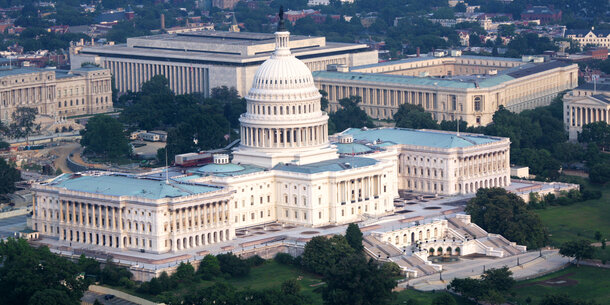After a delay, Sens. Charles Schumer and Mitch McConnell have finally agreed on a plan for how the Senate will run with its slim Democratic majority. What held them up was McConnell’s insistence that the Democrats forswear filibuster reform for two years.
That’s high-level chutzpah, of course. McConnell himself ended the filibuster for Supreme Court nominees in 2017, so he could swiftly add two new conservative justices. Previously, Democrats had done the same for other nominees. Changes to Senate rules — even abolishing the filibuster — is not only something that has been done, but done recently, and by both sides.
All this preserves for another day the question of what to do with the broken U.S. Senate.
It’s important to understand that the current status quo — that 60 votes rather than a simple majority are needed for everything, from major legislation to naming a post office — is not required, time-tested, or wise. It’s a relatively new, bad thing. And it gives extraordinary, destructive power to minorities to thwart needed action.
Many mistakenly assume the filibuster originated in the Constitution. In fact, the framers considered and rejected the idea of requiring supermajorities to pass legislation. It was used throughout the 20th century especially as a way to thwart civil rights legislation. Then, as parties grew more polarized, it became used to block… well, almost anything.
At the Brennan Center, we have argued it’s time to abolish the filibuster altogether. Should the Senate slow things down, find a way to deliberate and cogitate over legislation? Sure. But today’s filibuster abuse has made that a fanciful notion.
As Brennan Center Senior Fellow Caroline Fredrickson writes, “The filibuster has made the Senate a graveyard of new ideas.” It doesn’t spur cooperation or centrist dealmaking. It just lets a fraction of the minority party stop anything from happening. We saw it, for example, after the Sandy Hook school massacre, when a strong majority of the Senate (and 9 out of 10 voters) supported universal background checks for gun purchases, but the filibuster doomed action on the bipartisan Manchin-Toomey bill.
As framers including James Madison and Alexander Hamilton were well aware, the Senate itself challenges majority rule. They only agreed to giving states equal representation to stop small states such as Delaware from breaking off and making military alliances with European powers.
The imbalance is even worse now. California’s 39 million residents get two senators in Washington — the same as Wyoming’s 579,000. That has stark racial implications: in Wyoming residents are 16 percent people of color, while in California they hold a wide majority. As the country changes, its institutions must find a way to change with them. A permanent, unbreakable filibuster makes that even harder. (And don’t get us started on the Electoral College.)
Former President Barack Obama was right when, at Rep. John Lewis’s funeral, he called the filibuster a “Jim Crow relic.” It played a shameful role in blocking Black progress six decades ago. We must make sure it does not reprise that role in today’s struggles for voting rights, democracy reform, criminal justice reform, and the other steps the country needs.



